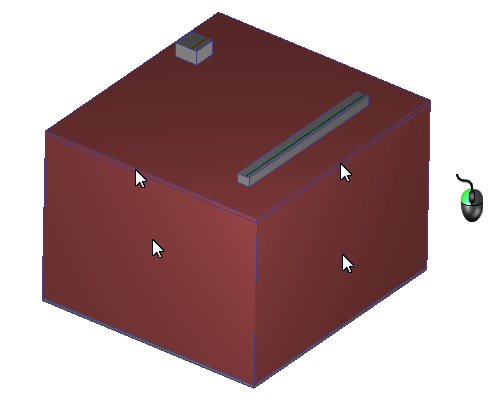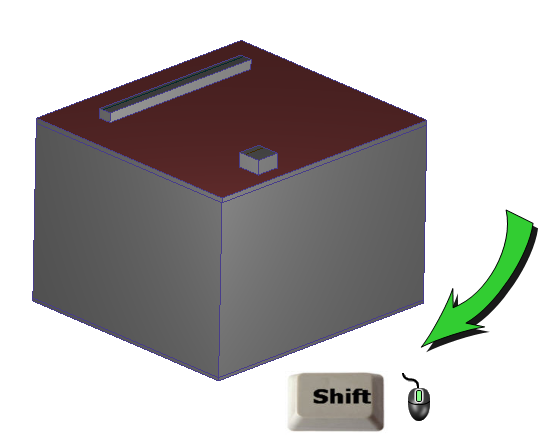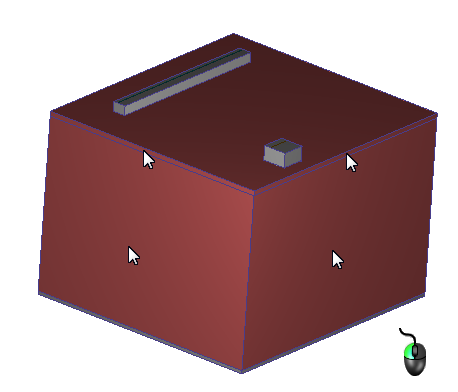Boundary Conditions: Exterior Thermal
To model the external conditions, we use an applied U value (also known as a "convection condition" or "film coefficient"). Because we are simulating a design day, we use values that simulate slow air movement by natural convection and a high ambient temperature.
1. Select the roof surface.

2. Select the wall surfaces (8 in all). You will need to rotate the model to access the surfaces on the other side:



3. Click Edit from the Boundary Conditions context panel:

4. On the Type row, select Film Coefficient.

5. On the Unit row, select BTU/ft2/h/R.

6. On the Film Coefficient row, enter 3.5, and verify the Temperature Units are Fahrenheit.

7. On the Ref Temperature row, enter 85.

8. Click Apply.
What is should look like...
9. To verify that the film coefficient boundary condition is correctly applied to the exterior surfaces, check the Design Study Bar and the colored stripe on the surfaces:
a. On the Design Study bar, the Film Coefficient condition should be listed with values of 3.5 BTU/ft2/h/R and 85 Fahrenheit.
b. There should be a colored stripe on the exterior surfaces that corresponds to the legend.
